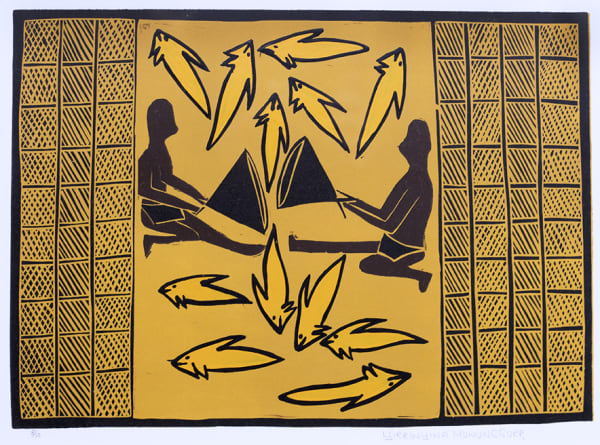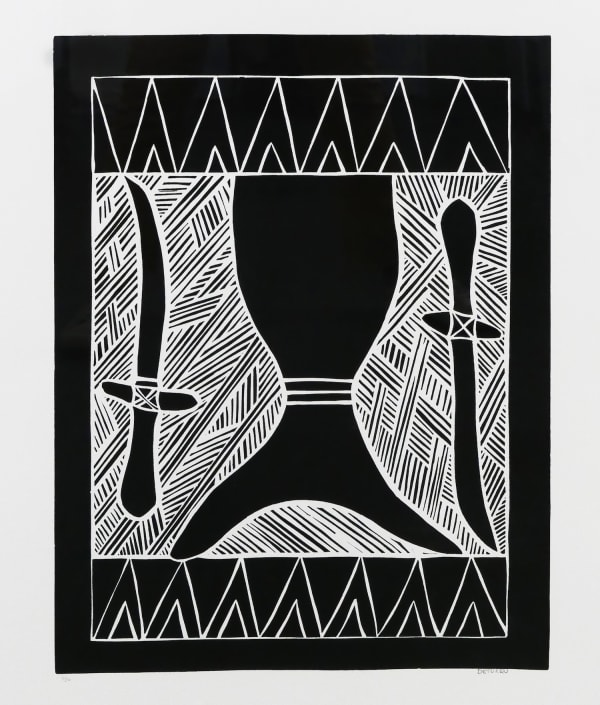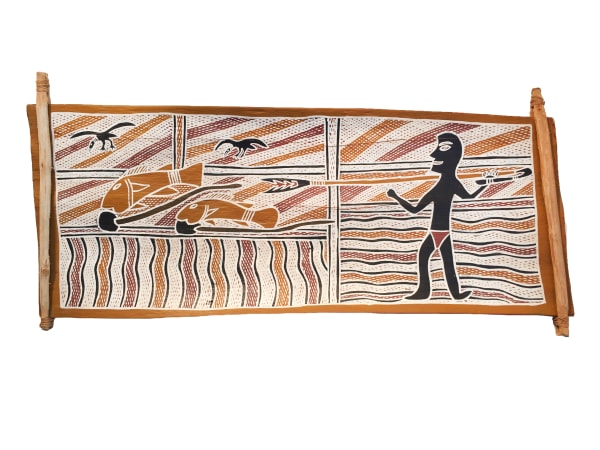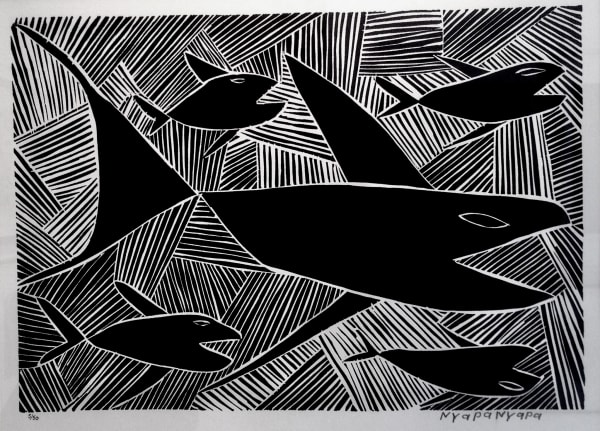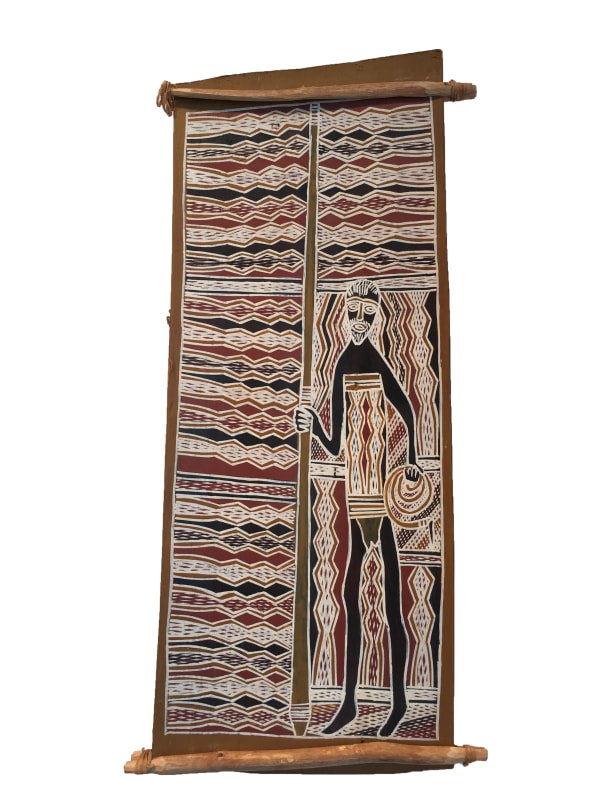Yolnu: Bark Paintings and Prints from Yirrkala: Group Show
The artistic traditions of the Yolnu people of northeast Arnhem land are amongst the richest in aboriginal Australia. The comparative inaccessibility and fecundity of the whole Arnhem Land peninsular has fostered the continuity and integrity of aboriginal life and culture there.
Nevertheless, although the traditional iconography of the Yolnu – and the belief-system from which it derives – date back millennia, and although they have constantly exercised and renewed it in rock painting, body painting and the decoration of log coffins and bark shelters, this rich heritage has long been tempered by an adaptability and an openness to outside influences.
The great Arnhem Land tradition of bark painting has grown up since the 1950’s, evolving in response to white contact and social change. The images and stories are drawn from the age-old tradition, the methods of painting are ancient, but the impulse behind them is outward looking and inclusive. They exist as part of an on going dialogue between the aboriginal and non-aboriginal worlds.
The dense patterning and evocatively depicted animal forms of Yolnu art make it strikingly attractive and accessible to ‘European’ eyes.
The materials used are traditional; they are part of the mythic landscape they depict. The bark itself is cut from the Eucalyptus tetradonta, or stringybark tree; the pigments used are ground from the local earth; and they are fixed either with orchid juice or wood glue.
Since 1996, due to an imaginative initiative by the Yirrkala art centre, the Yolnu have also been making linocuts and screen prints. These media have brought a new immediacy and directness to the rich artistic tradition.
Yolnu brings together major works by many of the painters and print-makers at Yirrkala.
-
 Yirrinyina Yunupingu, Dhanggi, 1997
Yirrinyina Yunupingu, Dhanggi, 1997 -
 Bunamali Gurruwali, Djayking - Javan File Snake, n.d.
Bunamali Gurruwali, Djayking - Javan File Snake, n.d. -
 Rrawun Maymuru, Yingapungapu, 1998
Rrawun Maymuru, Yingapungapu, 1998 -
 Tunbiala, Snakes at Trial Bay, 1965
Tunbiala, Snakes at Trial Bay, 1965 -
 Deturru Yunupingu, Lamamirri - Yumbulul, 1996
Deturru Yunupingu, Lamamirri - Yumbulul, 1996 -
 Wakuthi Marawili, Yathikpa , 1990
Wakuthi Marawili, Yathikpa , 1990 -
 Dhuwarrwarr Marika, Mutjalanydjal - The Dolphin and Small Blue Starfish, 1997
Dhuwarrwarr Marika, Mutjalanydjal - The Dolphin and Small Blue Starfish, 1997 -
 Naminapu Maymuru, Marrnguga Wulunggultji - Climbing the Bark, 1998
Naminapu Maymuru, Marrnguga Wulunggultji - Climbing the Bark, 1998 -
 Djambawa Marawili, Burruttji in a Billabong, 1989
Djambawa Marawili, Burruttji in a Billabong, 1989 -
 Nancy Gaymala Yunupingu, Guluwukbuk, 1996
Nancy Gaymala Yunupingu, Guluwukbuk, 1996 -
 Nancy Gaymala Yunupingu, Barru Ga Guya, 1996
Nancy Gaymala Yunupingu, Barru Ga Guya, 1996 -
 Nancy Gaymala Yunupingu, Getkit, 1996-1998
Nancy Gaymala Yunupingu, Getkit, 1996-1998 -
 Djambawa Marawili, Fish, 1998
Djambawa Marawili, Fish, 1998 -
 Nyapanyapa Yunupingu, Gunbirir, 1996
Nyapanyapa Yunupingu, Gunbirir, 1996 -
 Djambawa Marawili, Untitled , 1998
Djambawa Marawili, Untitled , 1998

